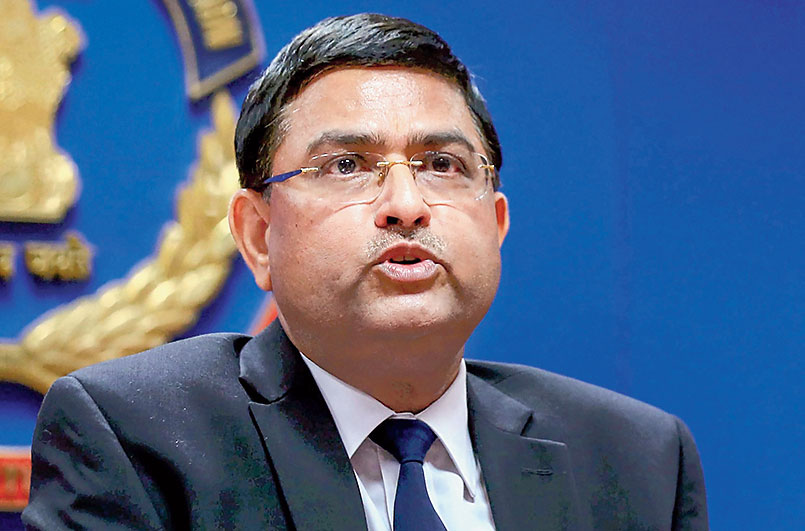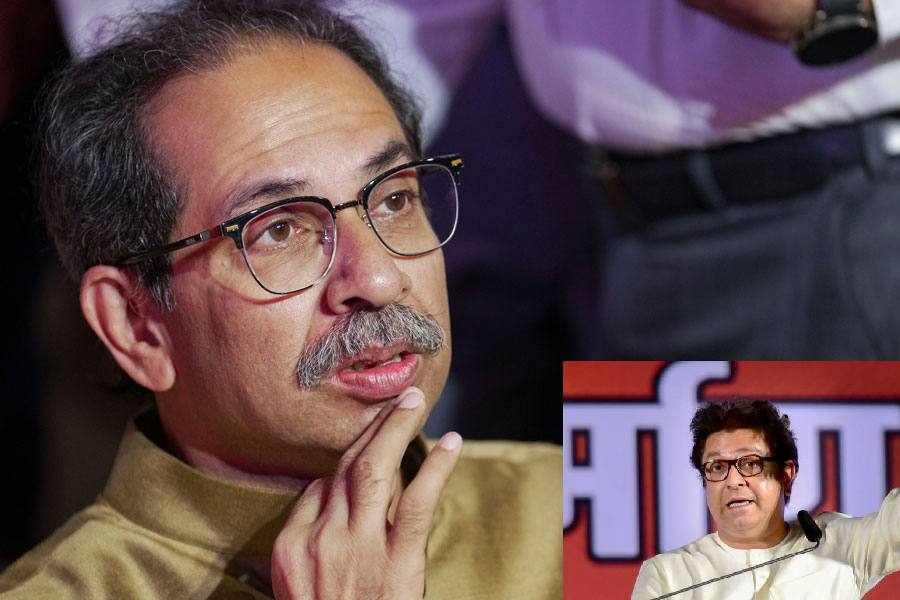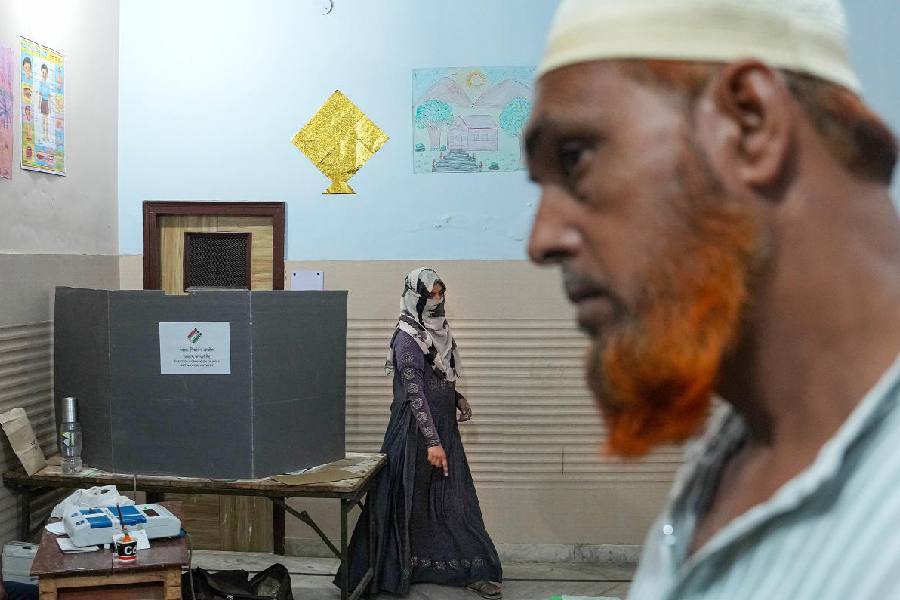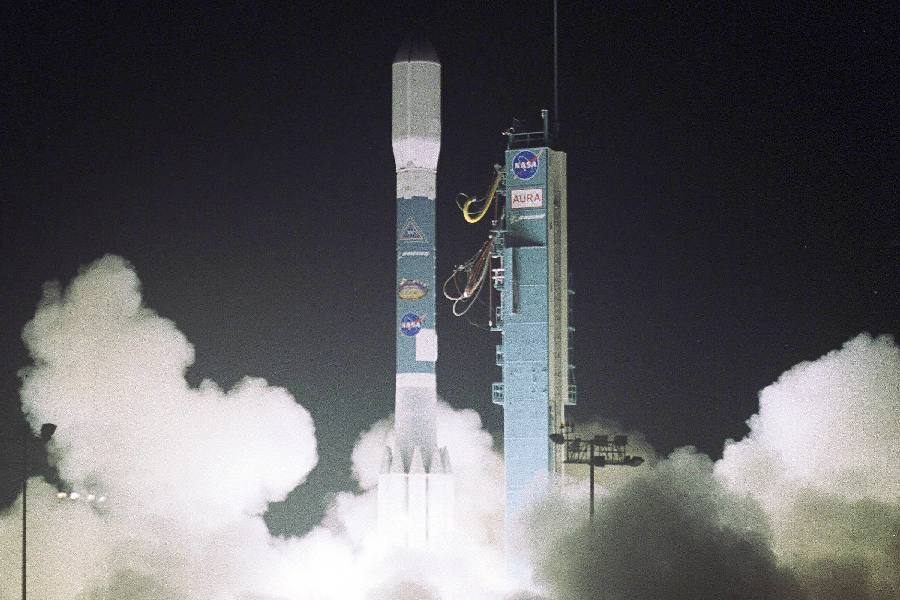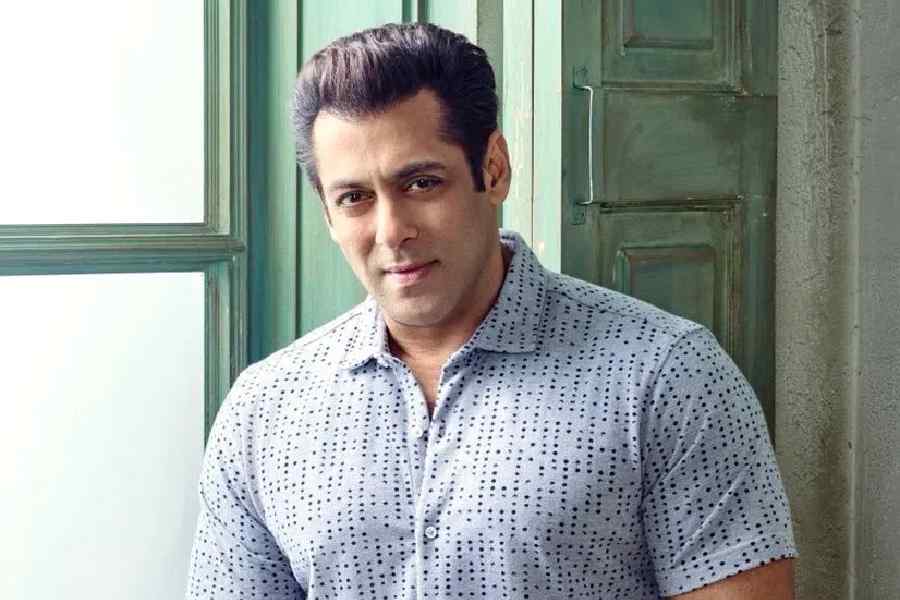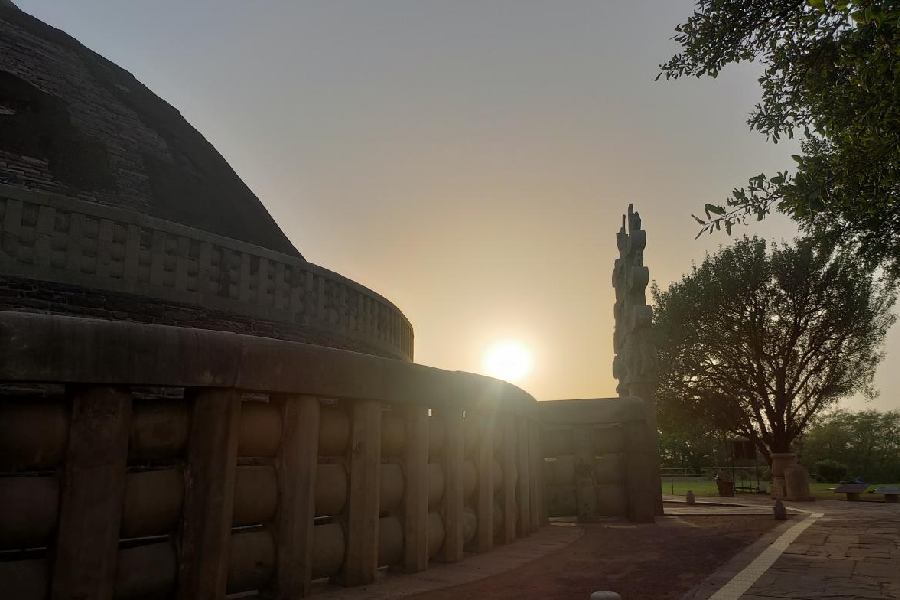Efforts to push in those who are considered close to the Prime Minister and had probed some of Gujarat’s most sordid episodes have escalated the factionalism at the top in the CBI, senior officers have told The Telegraph.
In April 2015, eleven months after Narendra Modi came to power at the Centre, the government appointed two officers with Gujarat links to senior positions in the agency.
Y.C. Modi, a 1984-batch, Assam-and-Meghalaya-cadre IPS officer, had been part of the Supreme Court-appointed special investigation team that had probed the 2002 Gujarat riots and given a clean chit to Narendra Modi. He was appointed as an additional director and took charge on July 1.
Arun Kumar Sharma, a 1987-batch, Gujarat-cadre IPS officer who according to a CD attended a controversial meeting related to the Ishrat Jahan fake encounter case, was appointed joint director and took charge in April.
Sharma’s name had also figured in a purported sting that claimed that Gujarat police had snooped on a woman architect in 2009 at the behest of a Narendra Modi aide.
“Soon after these two officers joined the agency, a power struggle broke out. Owing to their proximity to the Prime Minister, the duo began calling the shots. Then agency director Anil Sinha chose to remain a mute spectator for a while,” a senior CBI official said.
Sometime later in 2015, however, Sinha appointed his confidant R.S. Bhatti as joint director (policy), thus putting him in charge of coordinating with the Prime Minister’s Office (PMO). Sharma and Y.C. Modi were not pleased.
Early in 2016, Rakesh Asthana, a 1984-batch, Gujarat-cadre IPS officer believed to be close to Prime Minister Modi and BJP president Amit Shah, was brought into the agency as additional director.
Asthana had overseen the probe into the Godhra train fire that ignited the 2002 Gujarat riots. His findings backed then chief minister Narendra Modi’s claims of a conspiracy although the initial probe had suggested a “spontaneous attack”.
“Asthana’s entry into the CBI did not surprise anyone as he was considered the blue-eyed boy of Narendra Modi and Shah,” the officer said.
“By then, the rivalry between Sinha’s loyalists and the officers close to the PMO had intensified, causing the agency to split into two camps.”
The first signs of a fissure between the CBI director and the government appeared when the Centre sought to replace Bhatti with Sharma as joint director (policy).
“Sinha put his foot down: he told the PMO that Bhatti was doing a good job,” another agency officer said.
Sinha and Bhatti were both from Bihar, a state the BJP was trying to wrest from Modi’s then rival Nitish Kumar. “Soon the tussle in the agency took the shape of Bihar versus Gujarat,” the officer said.
Much to Sinha’s chagrin, the trio of Asthana, Y.C. Modi and Sharma started acting as an interface between the agency and the PMO.
“Although he expressed his resentment before his loyalists in the agency, Sinha preferred not to act, wary of creating controversy before his impending retirement,” the officer said.
In a surprise move three days before Sinha’s retirement in December 2016, the Centre transferred out the then special director, R.K. Dutta, who was tipped to be the next CBI chief because of his seniority. Dutta was appointed to the newly created post of special secretary in the Union home ministry.
“The government had made up its mind to appoint Asthana as the chief. Since Dutta was an obstacle, he was unceremoniously transferred. Asthana became the senior-most officer in the agency after Dutta’s exit,” another official said.
Overnight, the government appointed Asthana as interim CBI director, triggering resentment among IPS officers who accused the government of favouritism.
Lawyer-activist Prashant Bhushan petitioned the Supreme Court highlighting that the government had failed to appoint a full-time director despite having short-listed candidates. To ward off controversy, the government appointed Alok Verma, then Delhi police commissioner, as the CBI director in February last year.

Alok Verma was appointed the CBI director in February last year, but Asthana and Y.C. Modi refused to accept him as their boss. The Telegraph file picture
“But Asthana and Y.C. Modi refused to accept Verma as their boss and remained defiant. With tacit backing from the PMO, Asthana continued to report to it, bypassing Verma,” the officer said.
“He gained the support of several CBI officers, who were impressed by his proximity to the political leadership, intensifying the factionalism.”
Asthana’s growing clout left Sharma feeling left out. The two soon fell out in their race to be more loyal than the other to their political masters.
“Sensing the rift between them, the soft-spoken and mild-mannered Verma reached out to Sharma and appointed him joint director (policy) to act as an interface with the PMO. But Asthana remained defiant,” the officer said.
“Sharma had been eyeing the post of joint director (policy) for a long time. He turned a loyalist of the CBI chief.”
Sharma was among the 13 CBI officers, said to be close to Verma, who were transferred after the director and Asthana were benched in a pre-dawn operation on Wednesday.
In September last year, the government had appointed Y.C. Modi as director of the National Investigation Agency, a post he was more than happy with.
“By then Asthana was supervising high-profile cases involving Opposition leaders and was briefing PMO officials regularly,” the officer said.
In October last year, the power struggle became public when Verma gave a dissent note to the Central Vigilance Commission, which supervises the CBI, saying Asthana should not be elevated to special director as he was being probed in a corruption case. The government and the CVC overruled Verma and promoted Asthana.
Agency insiders said the government appeared to be condoning the slugfest, if not conniving with Asthana, with a bigger plan in mind.
“The government wanted to establish a direct channel with CBI sleuths, bypassing the director,” an officer said.
“The aim was to replicate the Gujarat model of governance, under which chief minister Narendra Modi had forged a direct link with ministry secretaries and joint secretaries, bypassing his ministers.”
Eventually, the officer said, the government wanted to make it easy for Asthana to slip into the position of CBI chief after Verma’s retirement on January 31 next year.
However, Asthana realised his chances of helming the agency were receding fast when Verma wrote to the CVC again last July, saying his deputy was being probed in half-a-dozen corruption cases.
That turned Asthana more vindictive towards his boss. He wrote to the cabinet secretary in August alleging Verma had taken a Rs 2-crore bribe from a businessman to give him relief from an investigation against him.
It ended with a bribery case being lodged against Asthana, the arrest of one of his aides, and eventually the benching of both Asthana and Verma by the government.
While the Supreme Court has appointed a retired judge to monitor the CVC probe against Verma, it has till now refused to hear Asthana’s plea against his removal.
“The biggest loser in the ugly war is Asthana as it has become untenable for him to remain in the CBI any more,” the official said.

